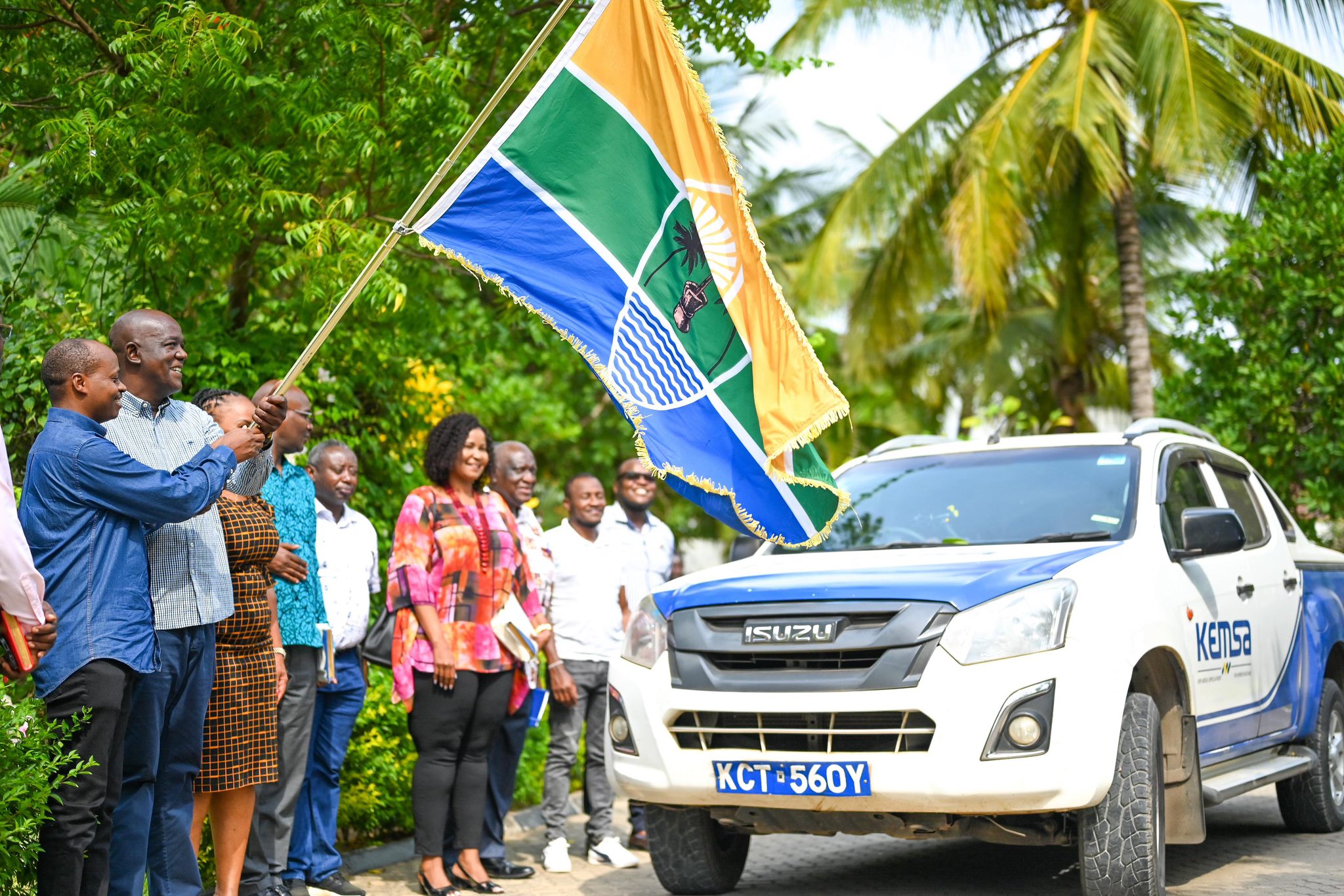
Kilifi County receives 1 million treated Mosquito Nets through KEMSA’s last-mile distribution project under the Global Fund » Capital News
KILIFI, Kenya July 10 – Kilifi County is the latest beneficiary of treated mosquito nets under the National Malaria Control Program (NMCP), facilitated by a Global Fund initiative in collaboration with the President’s Malaria Initiative.
The program aims to distribute 15.3 million nets across 22 counties to mitigate the impact of malaria, a leading cause of morbidity and mortality in Kenya.
On Tuesday, the Kenya Medical Supplies Authority (KEMSA) CEO Dr. Andrew Mulwa and Kilifi Governor Gideon Mung’aro flagged off 1,054,000 treated mosquito nets for distribution in the county in efforts to combat malaria in affected regions.
“We are grateful for what KEMSA is doing in this last-mile distribution initiative that makes it easier for us to hand the nets over to the communities,” Governor Mung’aro said during the consignment handover from KEMSA.
Dr. Mulwa said that Kilifi is the twelfth county to receive nets under this distribution program since it started in November 2023. “This program is a testament to our capacity for detailed planning, logistical execution, and the successful navigation of complex challenges, reflecting our dedication to public health and welfare,” Dr. Mulwa said.
He added that six more counties, including Kirinyaga, Baringo, Turkana, West Pokot, Narok, and Trans Nzoia, will receive nets before the end of August.
Dr. Mulwa led KEMSA staff in distributing mosquito nets to some of the families in Bundacho village, one of the 679 distribution posts in the seven sub-counties.
“We are here to bring you free mosquito nets through a Global Fund initiative to ensure you and your family live free of mosquitoes,” he told Nyale Mwakumi, a father of eight, after delivering a consignment to the nearby Bundacho Primary School.
A visibly elated Mwakumi thanked KEMSA and the government for the initiative, saying it would go a long way in protecting his family against malaria. Malaria is prevalent in the area, particularly during the rainy season. “I am happy that KEMSA has come all the way to my home to hand the nets to my family,” he said. “I am truly humbled.”
He told journalists that the last similar distribution took place about three years ago.
Zulfe Nyanzua Yawa, a village elder, stated that distribution to area residents would be completed within the week to ensure all beneficiaries are reached. “The beneficiaries are all listed, and everyone is going to receive the nets in this village,” she said.
Despite numerous intensive control efforts, malaria continues to pose a significant public health challenge in Kenya. Empirical evidence reveals that the disease not only imposes substantial economic burdens but also threatens the country’s progress towards achieving its sustainable development goals.
In Kenya, malaria transmission and infection risk are closely tied to factors such as altitude, temperature, and rainfall patterns. Consequently, malaria prevalence fluctuates significantly across different seasons and regions.
To effectively address these varied risks, the country is divided into five malaria epidemiological zones: coastal endemic, lake endemic, seasonal malaria transmission, malaria epidemic-prone areas of the western highlands, and low-risk malaria areas.
